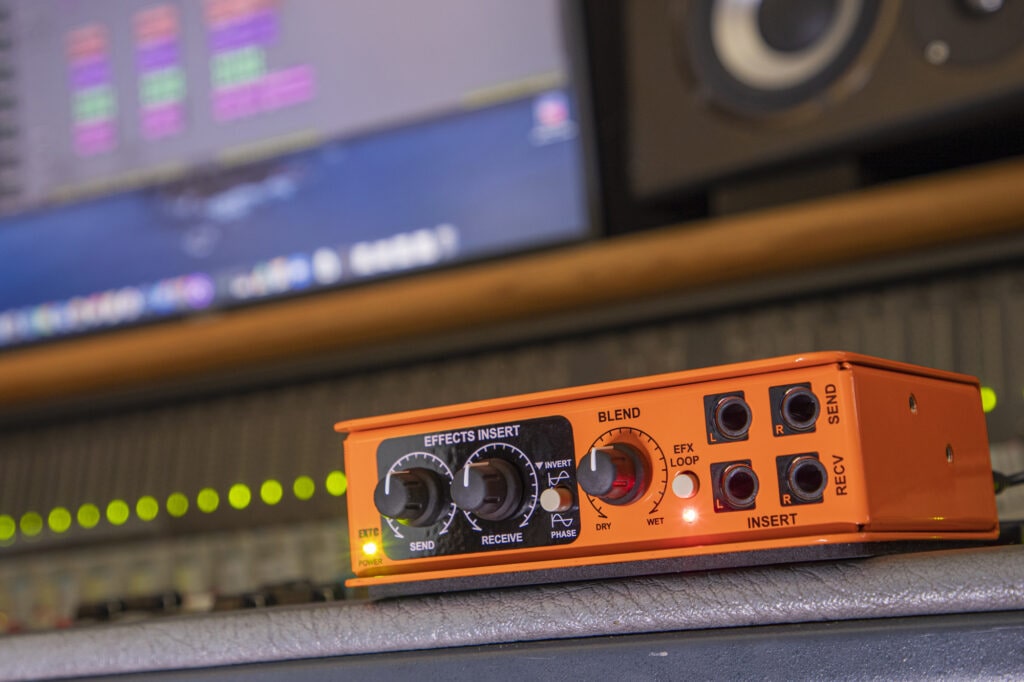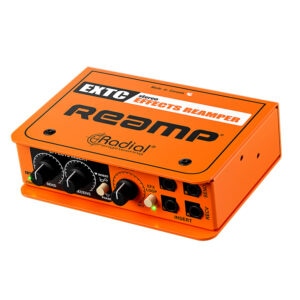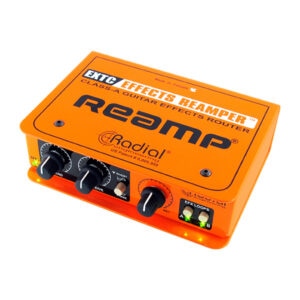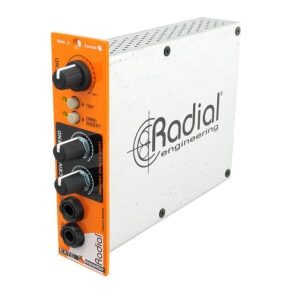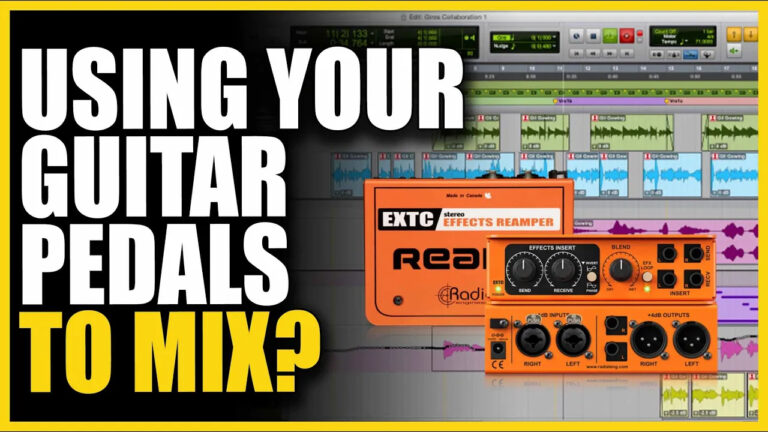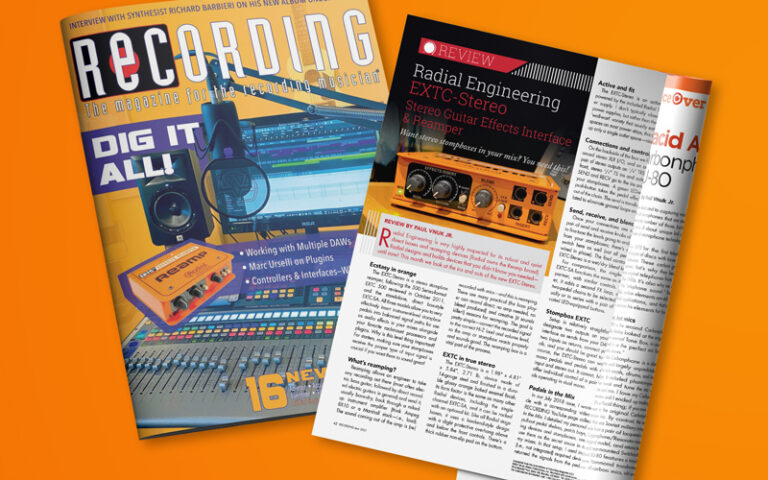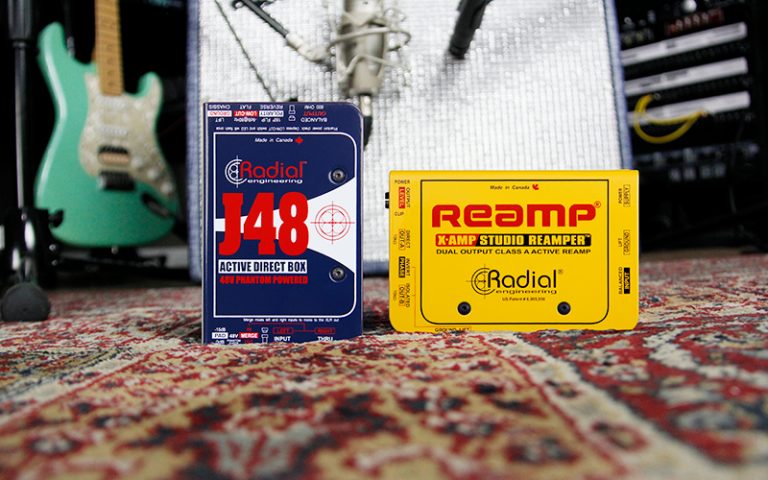The following review by Mike Levine originally appeared on the Mix Magazine website.
Double Your Sonic Pleasure With Pedals or Amps
By Mike Levine
Published: 06/07/2021
Radial Engineering’s EXTC-Stereo Reamp® is the latest model in the company’s EXTC (“ex-tee-cee”) line of reamping devices. Previously introduced models include the EXTC-SA, a mono unit with two switchable effects loops, and the EXTC 500 Series. The new unit gives users the capability to Reamp® their DAW tracks with stereo effects pedals, mono effects pedals or even two amplifiers.
Like all of Radial’s pedals, the orange-and-black EXTC Stereo Reamp® is built like a tank. I know to expect that from Radial products, but it still impresses me every time I get my hands on one. At 5.84 x 4.81 x 1.98 inches, the unit is similar in size to a large stompbox and the same size as the EXTC SA. It comes with a 15 VDC power adapter and features a power status LED on the lower left of the front panel. There’s no on/off switch.
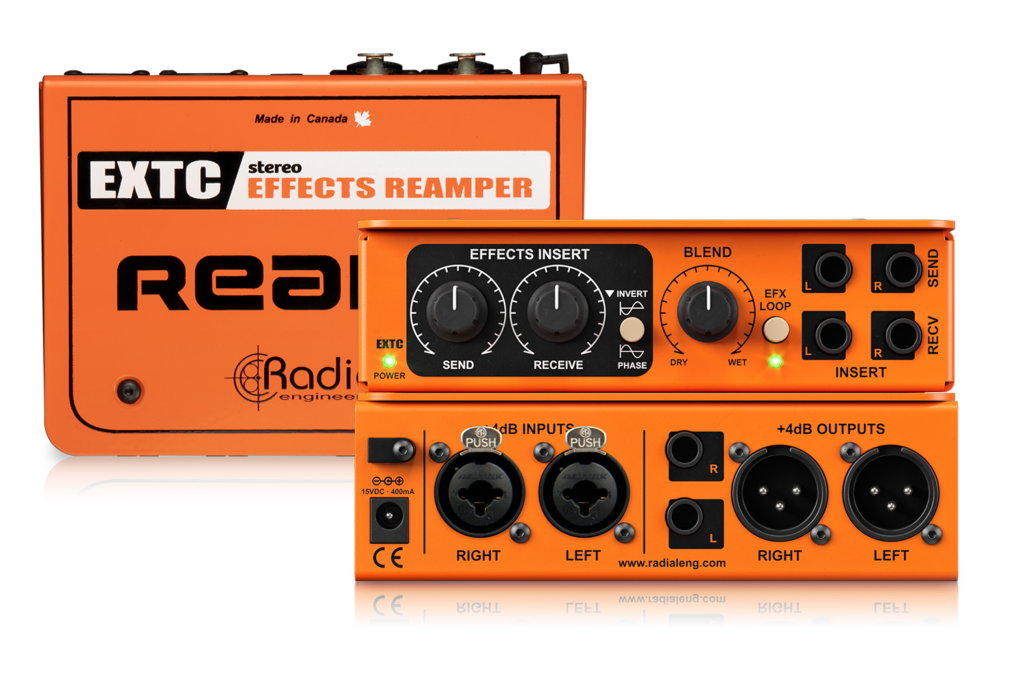
TWO REAMPS IN ONE
The front panel’s left side includes large Send and Receive knobs, which allow you to tailor the levels in and out of any connected devices to maximize gain staging. You also get a Blend knob, which controls the ratio of wet to dry coming out of the attached effects pedal(s).
Radial equipped the EXTC Stereo Reamp® with an Invert Phase switch, which has become necessary because some pedals, particularly older ones, may have reversed polarity. And we all know that it’s possible to use an XLR cable that is incorrectly wired.
If the output of the EXTC sounds thin, it could be from phase cancellation, which you can alleviate or reduce by reversing the polarity. Having the switch on the front panel makes it easy to compare both polarity settings. Also on the front is the EFX Loop switch, another control that’s useful for comparisons. It lets you bypass the effects from the connected pedals.
Unlike the EXTC SA, which has all of its I/O on the rear panel, the EXTC Stereo Reamp’s effects loop connections are on the front. If you’re tight on desktop space in your studio, having cables protruding from both sides of the unit could make it hard to find a convenient spot to place it. That said, the EXTC Stereo Reamp® features twice as many jacks and comes in the identically sized chassis to its mono sibling, so putting the send/receive jacks on the front was probably impossible to avoid.
The effects loop I/O includes Hi-Z left and right ¼-inch Send and Receive jacks for connecting to and returning from pedals and connecting to amps.
All the back panel I/O is balanced and line-level. From there, you connect the inputs and outputs to your audio interface. The EXTC’s inputs are both on XLR/1/4-inch combo jacks; the outputs are two stereo pairs—one on ¼-inch TRS jacks and the other on XLR connectors.
On the far left is the power input, and above that is a Cable Clamp, which makes it possible to tuck the power cable under it so it won’t get accidentally pulled out.
WHAT TO DO
With two channels of inputs and outputs, the EXTC Stereo Reamp® offers plenty of potential connection scenarios. The most basic is if you have a stereo track in your session that you want to Reamp® through a pedal. Connect two of your interface’s line outputs to the line inputs of the EXTC Stereo Reamp®, then plug the outputs of your pedal into a pair of Hi-Z inputs on your interface.
“It’s yet another practical, well-built, easy-to-use and excellent-sounding device from a company that just keeps turning them out.”
As you play back the track, you can record it into a new stereo track or two new mono tracks in your DAW. In addition to the original stereo track, your session would then contain a stereo or dual mono track processed through the pedal.
While I don’t have any true stereo effects pedals, I do have a mono-to-stereo Electro-Harmonix Lester G rotary speaker pedal that I tried with the EXTC, using one send and the stereo returns. I also connected a single mono pedal to process a mono track.
For another test, I connected a mono pedal to the left side of the EXTC and a different one to on the right, and each processed a separate mono track. The only limitation with that configuration is that the Send, Receive, Phase, and Blend knobs work globally, so their settings affect both the left and right sides.
Because the EXTC Stereo Reamp® has two Hi-Z Send outputs, you can also use it to Reamp® in the original sense of the word, with an amplifier. In that scenario, you’d connect the output from your DAW the same way, but then just use one send on the Radial unit to route the signal to a miked amp. You could then Reamp® with two amps. You would need to duplicate the DI track you’re reamping and patch the original and the copy through the left and right channels of the EXTC’s effects loop, then route each to a separate amp.
As in any reamping situation, you have to contend with latency delay on the reamped track, particularly if you have a big session and a high buffer setting. One way to go is to slide the reamped track back in time to match the timing (and phase) of the original. Alternatively, you could freeze some of your other tracks temporarily so you could lower the buffer setting before reamping, thus reducing the latency.
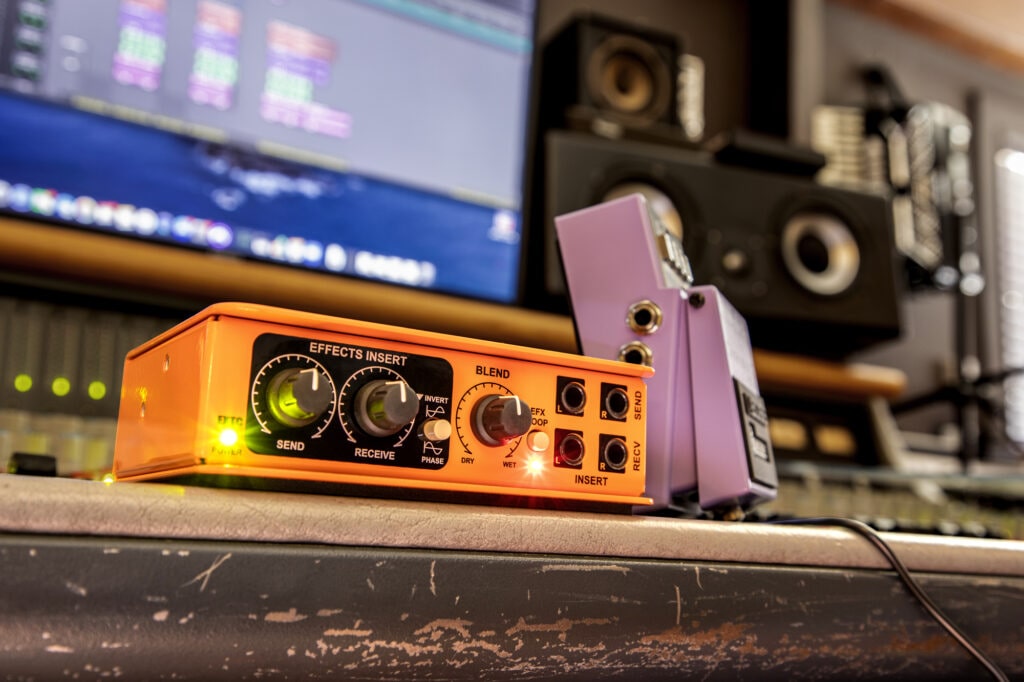
NO AGONY WITH THE EXTC
Being able to Reamp® DAW tracks with guitar effects opens a world of sonic possibilities for production and mixing. The EXTC Stereo Reamp® makes that process easy, flexible and stereo-capable. It’s yet another practical, well-built, easy-to-use and excellent-sounding device from a company that just keeps turning them out.
| PROS: Reamp® with pedals or amps. Send and Receive knobs for adjusting effects loop levels. Blend knob dry/wet control. Invert Phase and effects loop bypass switches on front. Solid build quality. |
| CONS: Jacks on front and back could make it challenging to fit on a desktop. |



